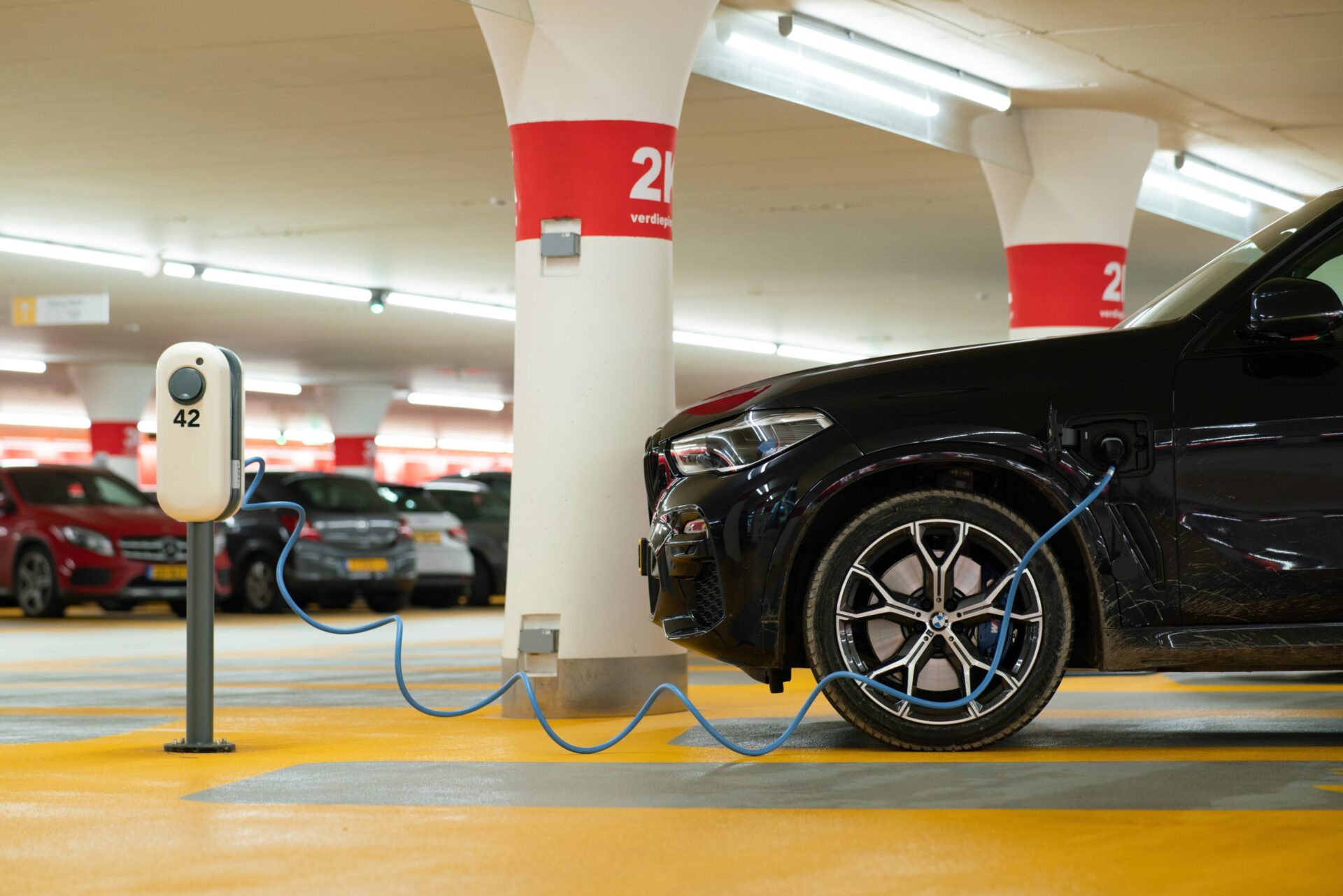Why V2G Charging Matters

The modern grid is increasingly complicated by a labyrinth of regulatory requirements aimed at decreasing carbon emissions and the looming tech disruption of a burgeoning prosumer-driven distributed energy resources (DERs) market. Adding to those challenges is the booming electric vehicle (EV) market and requisite EV charging requirements that often occur outside of the pre-existing peak demand paradigm. Fortunately, many EVs are equipped with vehicle-to-grid (V2G) charging functionality, which allows for reciprocal charging between an EV battery and the grid. As part of a battery program, V2G charging has the potential to ameliorate peak demand strain, while meeting decarbonization regulations.
The State of the EV Market
With increased focus on the decarbonization of the transportation sector, electric vehicles are rapidly surpassing the moniker of “a new technology” to becoming the “default technology.” Major auto manufacturers in the US and abroad are planning a total of over 50 new EV models “because they see they will lose market share if they don’t,” Commissioner Tremaine Phillips of the Michigan Public Service Commission said earlier this year in an interview with Canary Media. Automakers have committed to a decades-long, billion-dollar transition, dispelling any doubts about the electric vehicles revolution.
The International Energy Agency (IEA) conservatively estimates that 130 million electric vehicles (EVs) will be on the road globally by 2030. As the number of EVs grows and especially as larger trucks and buses electrify with larger batteries, there will be opportunities to use those batteries to also support the grid. The signals from the public and private sectors have already seed-funded the transportation electrification transition. With the addition of policy leadership from the White House and federal infrastructure legislation, the Infrastructure Investment and Jobs Act (IIJA)—now known as the Bipartisan Infrastructure Law (BIL) includes unprecedented funding for our infrastructure systems, investing in the technologies of tomorrow, and creating a more resilient system – the question is no longer “will electric vehicles overtake internal combustion engines vehicles?” but rather “how quickly can we prepare for hundreds of thousands of EVs on the road?”
While policy and private investment bolster the growth of EVs in the market, power system providers and their regulators need to face the challenge of extraordinary amounts and types of electricity demand. Utilities can also easily frame this problem as an unprecedented opportunity since EVs represent more load. Perhaps even more importantly, with appropriate demand-side management tools and bidirectional V2G charging, EVs can be leveraged as a flexible resource with vast promise for reinforcing the country’s energy security, resilience, economic vitality, and quality of life while supporting the electrical grid.
The Power of the “EV Problem”
On average, a Level 2 EV charger uses 7.2 kilowatts of electricity per hour of charging, and based on the amount driven by a typical American motorist, the average EV owner will need 13.4 kWh of electricity daily for their vehicle. For comparison, the average household electricity kWh consumption per day is 28.9 kWh, making the addition of an EV roughly increase daily consumption by 50 percent. Of course, these estimates vary by region, reflecting the eccentricities of local electricity markets and consumer behavior, but it does illustrate the fear that grid operators hold regarding the unfettered growth of residential electric vehicles. A sudden increase in demand from many vehicles drawing electricity, especially simultaneously at peak hours, would undoubtedly cause damage to the electric infrastructure and raise reliability and service issues.
This illustration only considers the specific use-case of residential, personal vehicles. There’s even more potential load growth from electrifying fleets of vehicles – the thousands of school buses, delivery fleets, rental stock, and even the utility’s own fleet of work trucks. Electrified fleets, which are parked and not in use for predictable hours, represent latent energy, and according to McKinsey, a “huge business opportunity.” With more predictability and control in comparison to an individual customer’s usage patterns, their potential as a grid resource becomes more apparent.
With both residential and fleet-based electric vehicles, the key point to emphasize is that grid operators and electric utilities are most concerned about the timing of the charging behavior from residential and fleet vehicles, yet they also are welcoming the increased load growth. How much more valuable can electric vehicles be if their batteries are tapped using V2G charging to provide “power sinks” for renewable energy and a resource during high-peak demand?
How V2G Creates A Better Grid
Vehicle-to-grid technologies “can provide backup power and resiliency benefits we need when there are outages or wildfires,” Clifford Rechtschaffen, the commissioner of the California Public Utilities Commission, said during a recent interview. And when California’s grid faces peak demand during hot summer evenings as solar generation fades away, “aggregated batteries from vehicles can provide that supply.”
With this understanding of charging durations and patterns, a bidirectional V2G-enabled EV fleet could serve as both a sustainable mobility option as well as an energy storage asset that sends power back to everything from critical loads and homes to the grid. A bidirectional fleet could also create new income possibilities for EV owners or fleets since V2G functionality “can also drive down costs for people to buy electric vehicles,” Rechtschaffen said, by offering opportunities for owners to earn money for the energy they export back to the grid. The energy potential isn’t just a drop in the bucket either. A 2021 study assessing the value of controlled EV charging found that the energy-storage capacity value of V2G-enabled EVs is “approximately an order of magnitude larger than that for smart charging.”
Tapping this potential supply and fostering the adoption of EVs requires technology to leverage the time factor of energy consumption. Fortunately, the federal policy landscape is helping enable innovations. Earlier this year, the U.S. Department of Energy launched a collaboration with automakers Ford and General Motors, vehicle-to-grid charging companies, and California’s biggest utilities and energy regulatory agencies to evaluate and validate the commercial viability of V2G technology.
Exporting excess power – especially at specific times – is a powerful instrument for balancing the grid. With the help of intelligent AI or a TOU rate signal, a managed charging schedule can be leveraged to control the timing of the energy consumption. For residential and fleets of EVs, V2G chargers add an additional value stream as energy is not only curtailed, but also absorbs renewal energy excess supply, and can dispatch during high demand. The trick is to orchestrate these patterns of individual actors in concert with the larger patterns on the electrical grid.
V2G Charging Conclusion
With the combination of in-depth analytics, intelligent control algorithms, TOU rates, and a hefty layer of customer engagement tools, it is not unfeasible that customers who opt for a V2G charger can not only provide additional grid benefit but also be adequately and accurately compensated for their contributions. Virtual Peaker’s technology represents the aggregation of these functions, and the ability to adapt to the quickly changing landscape of new technologies is paramount to realizing the full promise of electric vehicles, EV telematics, and V2G technologies.






